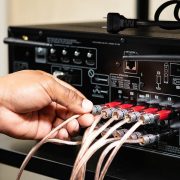Electrical safety is of the utmost importance in any residential or commercial building. In Australia, a country that is well known for its stringent regulations across all areas of society, but especially in relation to electrical safety standards, adherence to the various electrical wiring standards that are in operation is crucial to prevent accidents, fires and other hazards.
- Regulatory framework
Australia’s electrical safety standards are governed by a comprehensive regulatory framework that includes a wide range of national and state-level standards. The primary regulatory authority that is responsible for Australian standards electrical safety is the Australian/New Zealand Wiring Rules, which is more commonly known as AS/NZS 3000.
- Licensed professionals
Furthermore, all types of electrical work in Australia must be carried out by licensed and qualified electricians. This can ensure that the installation meets the stringent safety standards in operation and compliance with regulations. Electricians also need to hold a valid electrical license that has been issued by the relevant state or territory authority.
- Wiring methods and installation
In addition, these standards provide several guidelines for wiring methods and the installation practices that are used in the country. This can include proper cable routing, separation of circuits and suitable wiring systems for different environments while the standard also emphasizes the importance of adequate protection against mechanical damage, heat and moisture to ensure the longevity and safety of the electrical installation.
- Earthing and bonding
Likewise, proper earthing and bonding are critical for maintaining electrical safety at all times. Earthing involves connecting the metal parts of an electrical installation to the earth to prevent electric shocks from occurring as well as reduce the risk of fires caused by faults. Bonding can also ensure that all metallic parts within the premises, including plumbing and gas lines, are interconnected to prevent an electric shock.
- Circuit protection
Circuit protection is another fundamental aspect of electrical safety which relates to the use of circuit breakers, fuses and residual current devices or RCDs as they are sometimes known to prevent surges and earth leakage faults. Residual current devices have been specially designed to quickly disconnect the power supply when leakage of current to the earth is detected, preventing fatal electric shocks.
- Electrical appliances and devices
The various safety standards that are in operation in Australia extend beyond wiring to cover electrical appliances and devices. Moreover, all products used in electrical installations, such as switches, sockets and cables, must comply with the relevant Australian Standards and carry the required certification marks.
- Regular inspections and maintenance
Routine inspections and maintenance should be carried out to ensure the ongoing safety and functionality of an electrical installation. You should also consider undertaking periodic testing and tagging of electrical equipment to help identify potential issues and ensure they are in compliance with the various safety standards.
- Renovations and upgrades
Lastly, when undertaking renovations or upgrades that involve electrical work, it is essential to consult a licensed electrician. If you want to undertake changes to an electrical system, it may require updates to comply with current safety standards.
Therefore, to summarise adhering to electrical wiring safety standards in Australia is not only a legal requirement but also a responsibility that protects lives and property.

















Comments